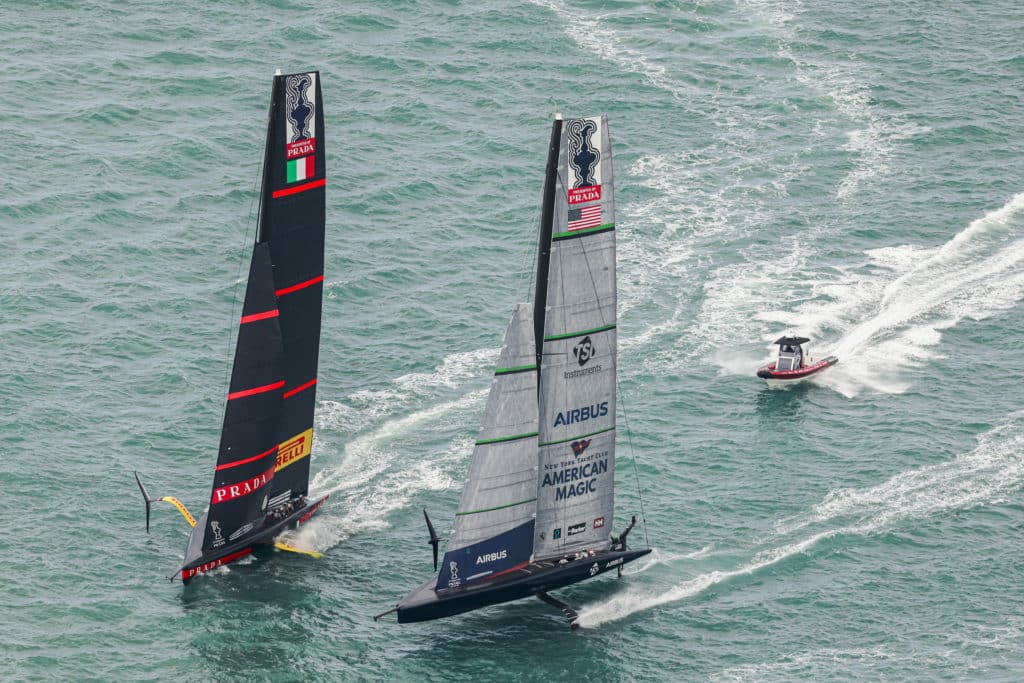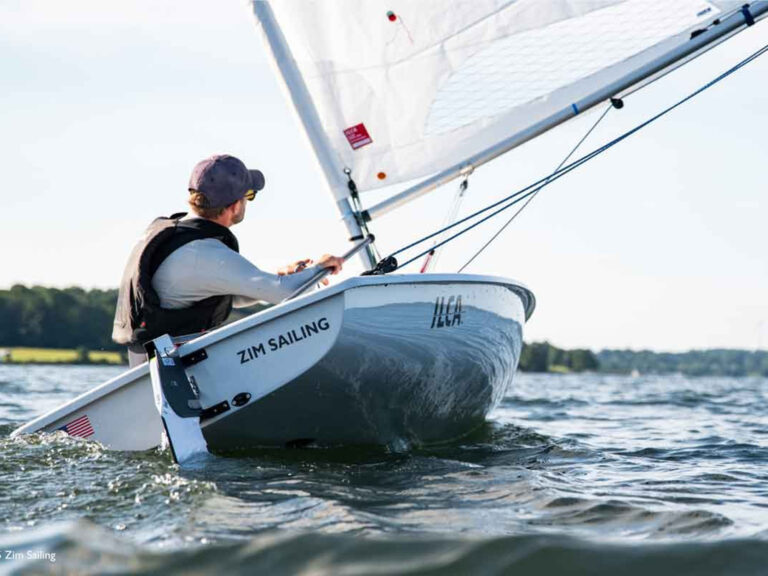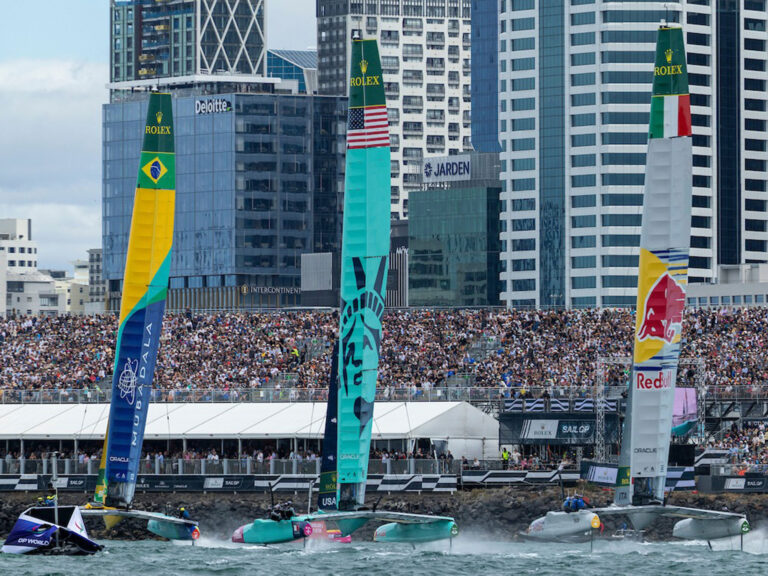
Prada America’s Cup World Series Auckland Luna Rossa vs. Patriot
It’s 0500 in Auckland, and down on the harbor, shore teams are prepping their boats for the third and final show of racing at the Prada America’s Cup World Series. Four more races—and then the one-day Christmas Cup—and it’s back to the barn for challengers and defender alike where they must figure out how to milk more speed from their 75-foot heifers (yes, they do moo their way around the racecourse, thanks to the foil-cant systems).
The ever-clever Kiwis of Emirates Team New Zealand appear faster than their respective challengers. As they should be. They wrote the AC75 rule, right? Be that as it may, after two days and eight races, most lopsided, some nail-biting, the World Series Auckland regatta has been a necessary exercise for race management and sailors alike, a chance to sort out technical issues and gremlins and set a few benchmarks for when the racing starts for real in the Prada Cup on January 15.
What have we gleaned so far from watching from afar? A lot, but let’s start with Sir Ben Ainslie, the Olympic medal machine and fierce helmsman of Ineos Team UK. In a strangely similar start to the 35th America’s Cup in Bermuda, Ainslie has assumed the role of challenger punching bag. First, having to answer for what is perceived to be the slowest boat in the fleet, then for exposing “Cant-gate,” the Cup’s first behind-the-scenes drama. Cant, as in, “I can’t cant my foils, because the Kiwis gave us a system that doesn’t work and won’t tell us how to fix it.”
That’s not really what he said, but if body language means anything, during the regatta’s first post-race press conference, it was saying a lot. And, boy, does Peter Burling love to needle Big Ben.
The Flight Control System is supplied equipment designed and provided to the competitors by Emirates Team New Zealand. It’s clearly a simmering sticking point, and not just for the Brits. Everyone’s reportedly had or is having their FCS issues, but for the Brits, the problem reared itself at the wrong time and place: on the racecourse on the opening day, with everyone watching.
Ainslie widely used the post-race presser to put this nagging issue out into the wider public domain.
Veteran journalist and author, Mark Chisnell, who contributes an excellent series of technical dives into the AC75 in the forthcoming Winter issue of Sailing World, writes what he learned from Ineos Team UK design director Nick Holroyd over the summer: “The Foil Cant System was designed by Team New Zealand, and it’s a good pointer for the future of the Cup. As of 31st of August of this year, the final spec of the Foil Cant System was issued and any modifications, or design improvements now need to be made unanimously. That’s forced the same group of four technical teams [that dealt with the foil arm failure] to the table, and it’s been a very positive step because there are a number of technical issues still outstanding with the Foil Cant System. It is prone to contamination within the hydraulic oil, and then that contamination undermines the reliability of the system. It’s in nobody’s interest – least of all the event’s – that there are races that are decided by the reliability of a supplied one-design system; that will be an awful outcome for the event.”
Holroyd was spot on: the British team’s DNF on the opening day wasn’t pretty for anyone associated with the regatta. “It aligns with the little bit that I know about the problem, which is that the FCS has generated impurities in its sealed hydraulic system for a long while,” Chisnell says. “Originally, the teams were pressing the Kiwis for a solution as it was a one-design part and no one else could mess with it. After August 31, everyone could and did get involved because there were still problems—effectively the Kiwis delivered a sub-standard system and there was a lot of time pressure to figure it out and sort it before the racing started. I don’t know if they have worked out what’s generating the impurities and just haven’t fixed it properly, or if the source of the problem is still unknown.
“The question is how big an issue it becomes—if a Kiwi-supplied part stops the challengers racing, then I’d say it’s going to be a big issue.”
With an overnight push from the Ineos shore team and engineers, Ainslie and Co., were back on the water the next day and took solace in the positive of actually finishing two races, even if they were notched into the Loss column.
Suffice to say, over two short days of races there’s been as much sympathy heaped onto the Brits as there has been praise for Emirates Team New Zealand for what is undeniably a fast AC75 package. Stable, fast and low flying in straight line, they’ve managed to easily extend while ahead and decimate leads when behind, even with unforced errors of their own. They’re quick, but far from perfect, as proven by American Magic, twice. “They are beatable,” says American Magic mainsail trimmer Paul Goodison, “but you have to have a really good race.”
American Magic has been the most consistent and seemingly more polished, and if not for a race-changing hiccup of their FCS system in the second day’s race, in which they were leading Luna Rossa, they’d be leading the series with a perfect score line. For now, going into the final day of racing, they stand tied with the Defender, and with Patriot they look plenty fast. Fortunately for those of us watching, American Magic squares up against the Kiwis one more time before the cows come home. Race 10 of 12 will be the race of the day, no doubt.





